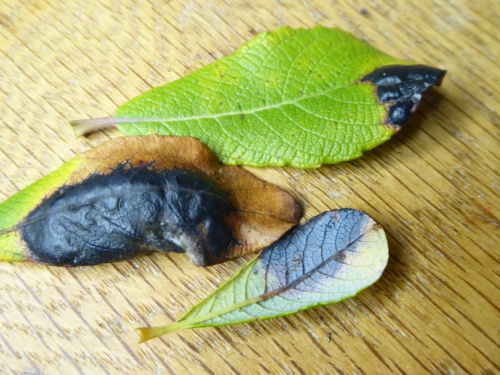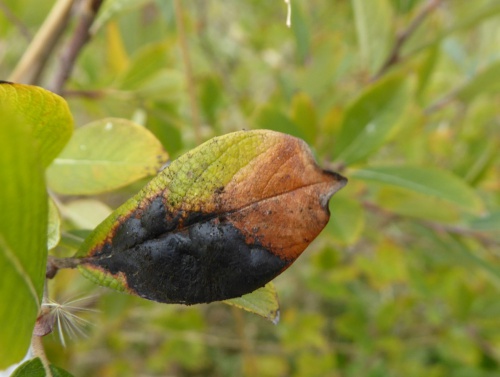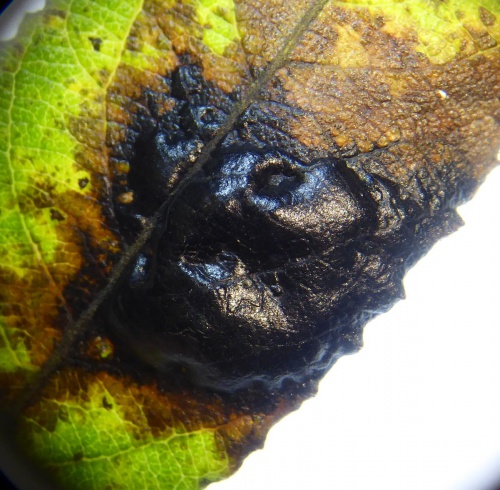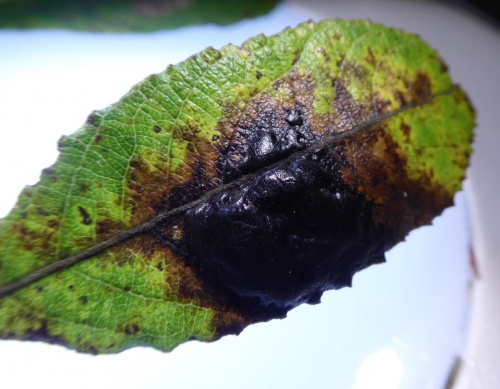Willow Tarspot - Rhytisma salicinum
This fungus causes a raised shiny black spot to appear on the leaves of certain willows (more tar-like than the spots found on Sycamore). Usually seen is the stroma, a thickened, blackened region of the leaf tissue, though this is preceded by smaller black spots about 1mm in diameter, the anamorphic (asexual) stage.
Leafmines caused by the weevil Isochnus are extremely common, mainly on narrow-leaved willows, and can be confused with the tarspot fungus. There are two species of Isochnus and they cannot be separated from the leafmines alone, however the larvae are quite easy to rear and once you have an adult the two species can be separated easily.
Where the host trees (mainly Goat Willow, Grey Willow, Eared Willow and hybrids) occur. It seems to occur mainly in rural areas, the fungus seemingly being less tolerant of atmospheric pollution than its well-known relative Sycamore Tarspot.
When the host trees are in leaf.
After leaf-fall, the stromatic area survives over winter and apothecia develop in spring, several per stroma, pushing through splits in the original leaf epidermal tissue to release spores in time to infect the new young leaves of the host.
Widespread in Britain though less frequent than its relative Sycamore Tarspot.
Status in Leicestershire and Rutland not known.
Leicestershire & Rutland Map
Enter a town or village to see local records
MAP KEY:
Yellow squares = NBN records (all known data)
Coloured circles = NatureSpot records: 2020+ | 2015-2019 | pre-2015
UK Map
Species profile
- Common names
- Willow Tarspot
- Species group:
- Fungi
- Kingdom:
- Fungi
- Order:
- Rhytismatales
- Family:
- Rhytismataceae
- Records on NatureSpot:
- 4
- First record:
- 03/11/2018 (Timms, Sue)
- Last record:
- 16/08/2023 (Lewis, Steven)
Total records by month
% of records within its species group
10km squares with records
The latest images and records displayed below include those awaiting verification checks so we cannot guarantee that every identification is correct. Once accepted, the record displays a green tick.
In the Latest Records section, click on the header to sort A-Z, and again to sort Z-A. Use the header boxes to filter the list.





